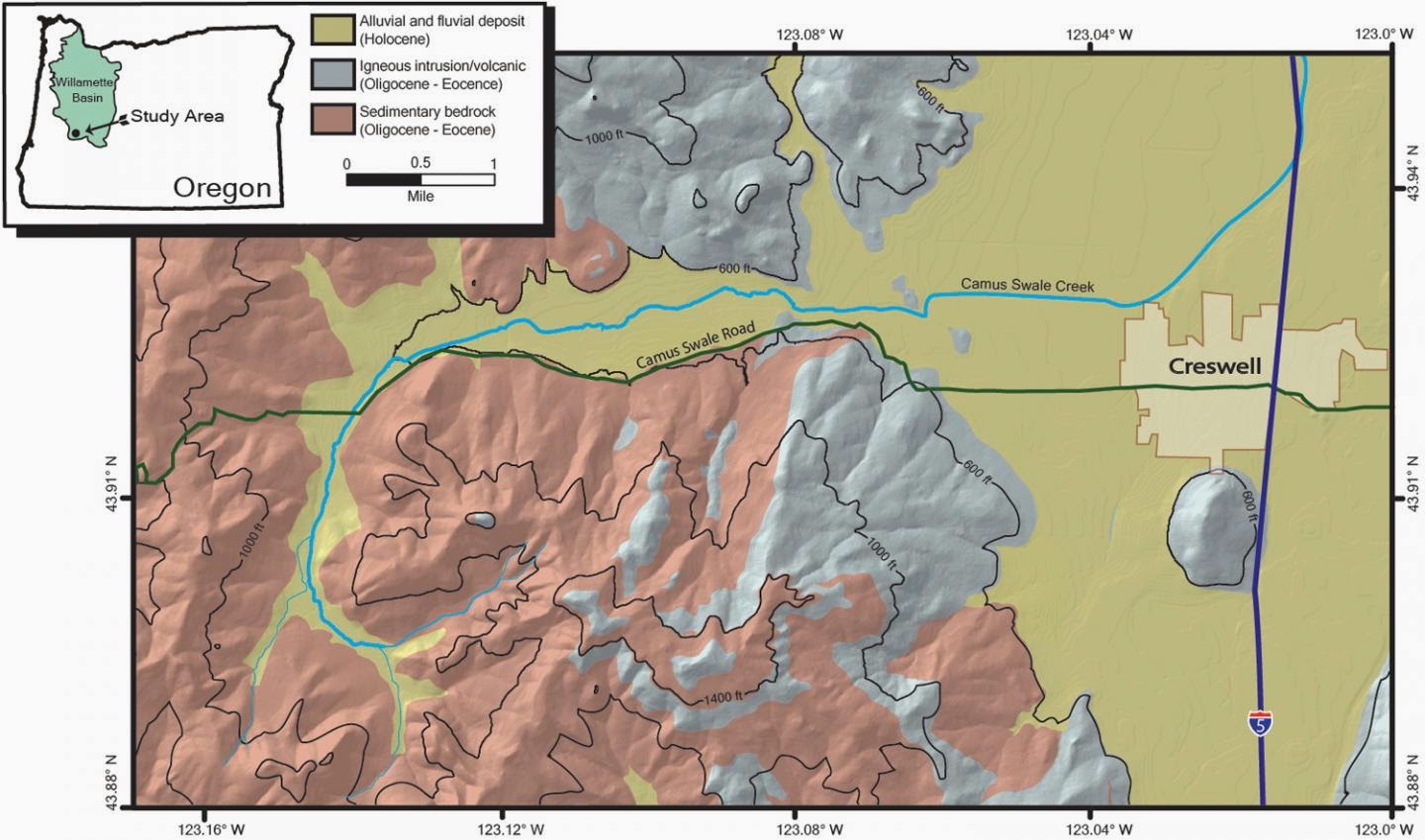
University of Oregon geologist Qusheng Jin initially labeled his theory “A Wild Hypothesis.” Now his study of arsenic cycling in a southern Willamette Valley aquifer is splashing with potential significance for arsenic-compromised aquifers around the world.
In a paper online ahead of regular publication in the journal Nature Geoscience, Jin’s five-member team reports on a bacterial process that turns toxic inorganic arsenic into organic forms that usually are considered to be less dangerous. Jin’s conclusion now is that organic arsenic should be monitored.
“No one has touched on the link between arsenic on the surface and in groundwater,” said Jin, a professor in the UO Department of Geological Sciences. “Traditionally the presence of the organic form in groundwater has been ignored. The focus has always been on inorganic forms, arsenate and arsenite.”
That approach, Jin said, over-simplifies the view on arsenic levels and overlooks how human activities, including pumping and irrigation, or environmental factors such as heavy rain or drought may influence organic forms.
Water is considered safe to drink when total arsenic levels are below 10 micrograms per liter. Levels above that are considered cancer risks.
Arsenic is a natural element found in abundance in the Earth’s crust. Organic arsenic, Jin said, is made up of a series of carbon-containing forms. Total arsenic is commonly assumed to be a pure metalloid form. Arsenic often changes forms as it moves through the environment. It also is used in some pesticides, herbicides and wood preservatives and in chicken feed.
The organic arsenic that caught the team’s attention is dimethylarsinate (DMA). This intermediate stage is a floating mishmash of dissolved organic forms along with inorganic arsenite and arsenate already floating freely in the water.
DMA’s concentration — sometimes exceeding 10 percent of inorganic arsenic — always correlates with the overall arsenite level, Jin said. Eventually, he added, the conversion process can turn arsenic into arsine, a volatile gas similar to fluorescent phosphine that rises as the result of decomposition in graveyards.
The fieldwork, led by Jin, involved gathering water samples at depths ranging from 20 to 40 meters (66 to 131 feet) from 23 wells located on rural properties near Creswell, Oregon. In 10 of the wells tested, DMA was found with concentrations as high as 16.5 micrograms per liter.
The aquifer consists of volcanic sandstone, tuff and silicic ash, overlaid by lava flows and river sediments. The basin floor dates to 33 million years ago. Organic arsenic in the aquifer, the researchers noted, is similar to that in aquifers in Florida and New Jersey in the United States and in Argentina, China (Inner Mongolia and Datong), Cypress, Taiwan and West Bengal. Arsenic in groundwater is a challenge worldwide, including all 48 contiguous U.S. states.
To test the hypothesis that arsenic cycling was occurring by way of native bacteria, UO doctoral student Scott C. Maguffin conducted a series of three laboratory experiments involving dissolved arsenite and arsenate taken from wells in the study area. The addition of ethanol in the final experiment stimulated bacterial activity, resulting in DMA concentrations much higher than those found in the field.
“I am concerned about the impact of this cycling process in aquifers,” Jin said. “If this process is as important as we believe it is, it will impact the transport and fate of arsenic in groundwater. Many organic arsenic forms are volatile and prone to diffusion. Where will these organic arsenic forms go? Will they ever make to the surface?”
The findings, Jin added, open a window on naturally occurring arsenic cycling and how, eventually, it might be manipulated to treat arsenic-contaminated water. “The cycling is important,” he said. “This basic science provides a conceptual framework to understand arsenic behavior in the environment.”
Note : The above story is based on materials provided by University of Oregon.










